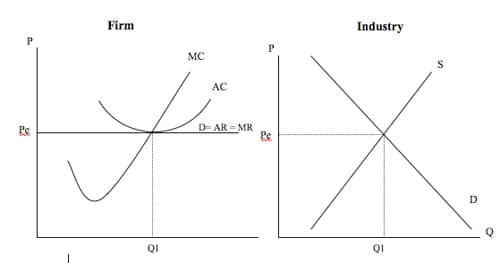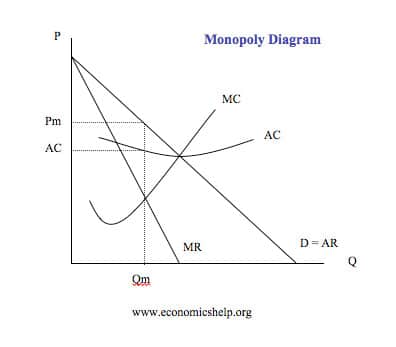Allocative Efficiency
Definition of allocative efficiency. This occurs when there is an optimal distribution of goods and services, taking into account consumer’s preferences.
A more precise definition of allocative efficiency is at an output level where the price equals the Marginal Cost (MC) of production. This is because the price that consumer’s are willing to pay is equivalent to the marginal utility that they get. Therefore the optimal distribution is achieved when the marginal utility of the good equals the marginal cost.
Example using diagram
If the marginal cost was £10, and people were only willing to pay £5 for the good (at output 5), this is allocatively inefficient. This is because the value people get (£2) is less than the cost of producing. The cost is greater than the benefit and it is inefficient.
If the marginal cost of a good was £5, and the price was £10 . The price (MU) is greater than marginal cost – suggesting under-consumption. If output increased and price fell, society would benefit from enjoying more of the good.
Allocative efficiency occurs at an output of 8.
Perfect competition – allocatively efficient

- Firms in perfect competition are said to produce at an allocative efficient level because at Q1 – P=MC
Monopolies – allocatively inefficient
- Monopolies can increase price above the marginal cost of production and are allocatively inefficient. This is because monopolies have market power and can increase price to reduce consumer surplus.

Monopoly sets a price of Pm. This is allocatively inefficient because Price is greater than MC.
Alloactive efficiency would occur at the point where the MC cuts the Demand curve so Price = MC.
Allocative efficiency and productive efficiency
Productive Efficiency is concerned with producing goods with lowest cost. This occurs on the production possibility frontier (PPF).
(Note producing on the production possibility frontier is not necessarily allocatively efficient because a PPF only shows the potential output. Allocative efficiency is concerned with the distribution of goods and this requires the addition of indifference curves.

